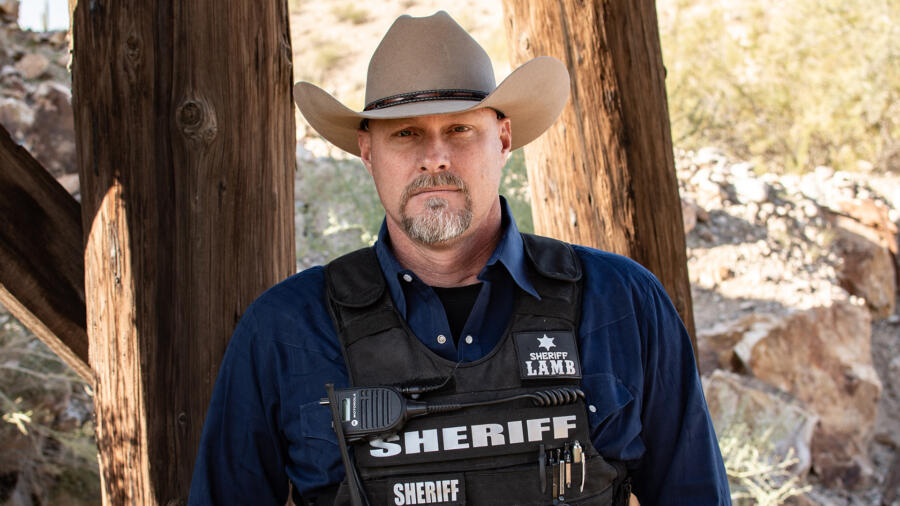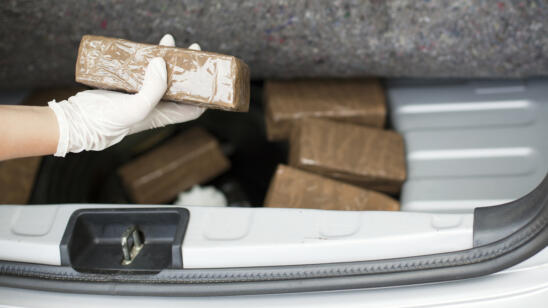During a Facebook Live on January 3, 2018, Live PD analyst Tom Morris Jr. spoke with Pinal County (Arizona) Sheriff Mark Lamb about his jail’s participation in the new season of 60 Days In. During the interview—which we feature below and is edited for clarity and length—Lamb spoke about his biggest concerns when filming the show, the challenges in his facility before filming and the advice he gave this season’s participants.
Give us a little background on your career. How long have you been in office?
I started my law enforcement career [when] I was 34 years old. I’ve been in office for two years now. Most of my career I’ve spent as a gang and drug detective.
Why did you decide to participate in ’60 Days In’?
Anytime you can get an in depth look at your facility, there’s no other way to do it. It was a valuable program.
What was your biggest concern when you started filming the show in your jail?
Like any sheriff, the jail is the biggest source of liability for us. So we were just concerned for [participant] safety and making sure that the rest of the inmates were safe. There were some tense situations and it gets a little dicey in the end, but once we got past that, in the end it worked out.
How did you approach participant safety?
That’s a daily thing. We were talking to the crew every day, we were talking with…the [few] staff members who were involved. We made sure we were in communication every day to make sure that there was nothing going on. We monitored the kites going back and forth, which are the notes they pass. It was stressful.
Without giving anything away, what are some of the top things you learned on this show?
We learned how [inmates] were hiding drugs and bringing them into our facility.
In ways you hadn’t seen before?
We had seen them, but [the participants] gave us a few more pointers. We learned we were a little stagnant, a little methodical in the way we search cells. Since then we’ve put in a body scanner. We’ve done some other things. We learned which programs were working and which programs weren’t.
Have you received any advice from sheriffs or participants from previous seasons of the show?
I did. I called the sheriff from Clark County, Indiana. We talked a lot about some of the issues, and we felt comfortable moving forward. We’re glad we did.
What were some of the challenges you faced in your facility before you started filming?
The difference between this season and previous seasons is we gave them missions. The three things we were most interested in were drug activity, gangs and jail operations.
What are the most common crimes people are locked up for in your jail?
Probably more misdemeanors than felonies. [But] we house all felons; the people who are there for a long time are [for] felonies. I would say the majority of them are [there on] drug charges, probably like most jails across America.
Tell us about race relations within the facility.
That’s one thing you’re going to see this season. Unfortunately, race plays a huge part in our facility and a lot of the West Coast facilities. That’s something we’re trying to break through all the time. We obviously do not condone it, but this show gave us really good ideas to combat that.
The audience is going to see life in prison as well—food, haircuts, cultural things that go on amongst the inmates, right?
Yeah and it’s funny to see how the participants slide right into that inmate mentality quickly.
Do you have any programs or new policies in your jail that you’re proud of?
We’ve got our new body scanner; we’re proud of that. We already had a housing unit for military veterans. That’s one of the things we’re most proud of. We have a 0 percent recidivism rate right now amongst our veterans in our facility.
That’s very unique in jails, isn’t it?
It is a unique program. We actually took it from Sheriff Peter Koutoujian from Middlesex County, Massachusetts, and we put it in place. Why reinvent the wheel? If somebody’s got something good, let’s run with it.
How often do your corrections officers receive training?
We’ve got mandatory trainings we try to do every year. I’d love to train them more, but staffing issues is always a problem [due to] budgets. But they receive quite a few hours a year of training.
What are some of the specific areas they get trained in?
In the jail facility, they’re being trained in defense tactics, handcuffing, proper procedures, transportation. We do firearms training for our detention officers as well.
What advice did you give the participants?
Be safe and be yourself. They needed to remember their backstory. But the most important thing, and the easiest thing, was to remember was to be yourself. And most of them did that. Some of them got away from themselves a little bit, but in the end, they all brought back very valuable information.
Related Features:
Watch Full Episodes of ’60 Days In’
What It’s Like to Work an iPhone After 25 Years in Prison
From Cons to Coders: How Some U.S. Prisons Are Teaching Tech


